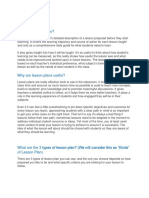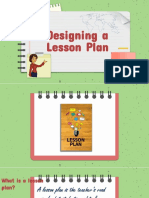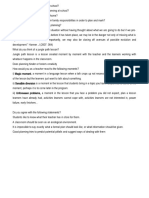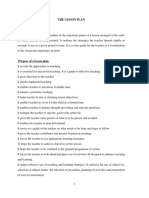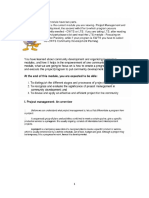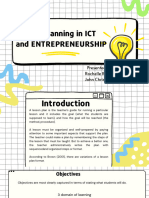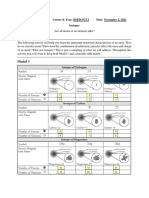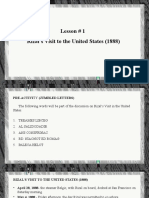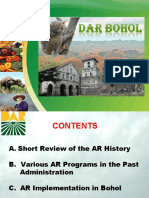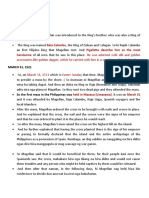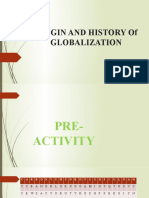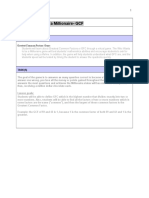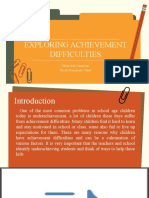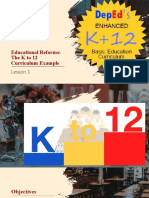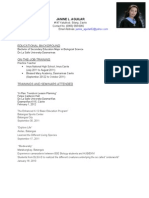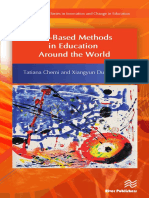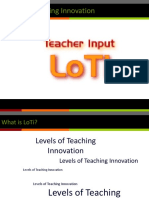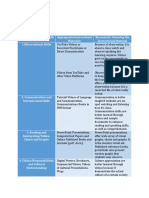Module in Principles and Methods of Teaching
LORETA R. CINCO, MAED
Module 3.1 | 1
�Module in Principles and Methods of Teaching
This module may not be reproduced in any form
without the permission of the author. All efforts were
made to ensure that this module comply with the
requirements of copyright clearances and appropriate
credits. The authors will attempt to incorporate in the
future printing any corrections that may arise from
further reviews and critiques.
Copyright 2020
EASTERN VISAYAS STATE UNIVERSITY
TANAUAN CAMPUS
HAVANA ST., SAN MIGUEL, TANAUAN, LEYTE
ALL RIGHTS RESERVED
Module 3.1 | 2
�Module in Principles and Methods of Teaching
Introduction:
Planning for effective learning experiences is one of the skills
the teacher has to develop. Planning ensures more or less the direction
that his efforts will take. It helps create wholesome discipline, a
pleasant classroom atmosphere and purposeful teaching-learning
activities that are free from waste in terms of time and effort.
Careful planning can give the teacher a sense of confidence in
overcoming nervousness and preventing wastage and confusion
especially during the first days of teaching.
Module 3.1 | 3
�Module in Principles and Methods of Teaching
In this module you are expected to:
Cite the parts of the Lesson Plan
Write SMART Objectives in the Cognitive
psychomotor and affective domains
Use the 4A’s Format
Conduct a demonstration teaching
Module 3.1 | 4
�Module in Principles and Methods of Teaching
What is a Lesson Plan?
A lesson plan is a teacher’s guide for facilitating a lesson. It
typically includes the goal (what students need to learn), how
the goal will be achieved (the method of delivery and procedure)
and a way to measure how well the goal was reached (usually
via homework, assignments or testing). This plan is a teacher’s
objectives for what students should accomplish and how they will
learn the material.
A lesson plan refers to a teacher’s plan for a particular lesson.
Here, a teacher must plan what they want to teach students,
why a topic is being covered and designed how to deliver a
lecture. Learning objectives, learning activities and assessments
are all included in a lesson plan.
PARTS OF LESSON PLANNING
1. OBJECTIVES
This is possibly the most important part of the 3 parts of a
lesson plan, they are the reason the lesson exists and should
drive the activities. It is realistically the first thing a teacher
should do, giving the whole lesson a statement of purpose.
Objective should answer what students will be capable of
doing by the end of the lesson, this is what teachers should
start with. They may include things such as explain, create,
define or use as just a few examples.
Often objectives use SMART criteria, they should be
specific, measurable, attainable, relevant and time-based.
The aims you look at should be specific enough to be
achieved in that particular lesson, even if the lesson works
towards a greater overarching aim.
“To develop an appreciation of creative writing.”
“To develop an appreciation of creative wiring in the short
story ‘The Looking Glass’ by Anton Checkhov.”
Module 3.1 | 5
�Module in Principles and Methods of Teaching
In the examples above, the second aim is much more
appropriate in one single lesson as it is something that can
be achieved in one lesson.
2. SUBJECT MATTER
The subject matter includes the specific topic and how
that relates back to the National Curriculum. It should include
the sources of information or references – whether that is
websites, textbooks or some other material.
It likely also lists any objects or tools teachers may use to
enhance their lessons
3. PROCEDURE
The procedure makes up the body of the plan, it is an
explanation of how the lesson will progress step-by-step.
For detailed plans, this includes the expected routines, the
activities that will go on and the questions and answers. For
semi-detailed, this is more about the procedures or steps and
the methods that teachers will use to get there.
4. EVALUATION
Evaluation is where teachers weigh up how well children
understand what they’ve been in that lesson, this may be as
simple as some multiple-choice questions on a formative
test. Teachers will then want to look at the proportion of
class who got the answers right.
5. ASSIGNMENT
The assignment component of a plan is made up of
questions, exercises and set of practice specified by the
teacher including focused specific questions.
Do this activity:
Write a lesson plan using the 4A’s format.
Module 3.1 | 6





